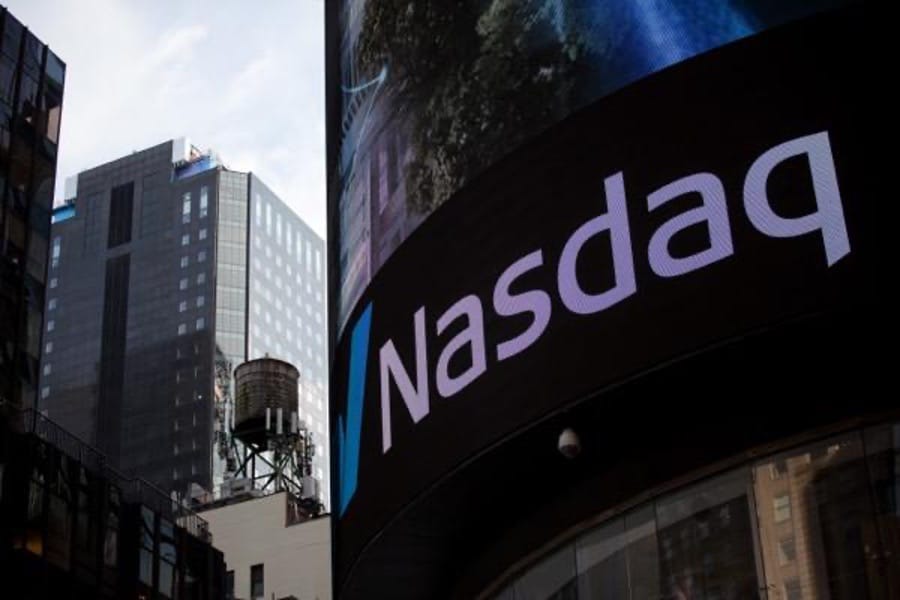The NASDAQ 100 is up 3% today as investors consider whether the tech-heavy US index is primed to take off.
The NASDAQ 100 index was a key beneficiary of the covid-19 pandemic.
After falling from 9,624 points in mid-February 2020 to 6,994 points by 20 March 2020, the US index recovered in a matter of weeks. It then surged to a record 16,573 points by November last year, as the Federal Reserve and US government marched in twin-step to deliver previously unthinkable levels of fiscal support.
But since then, it’s fallen by 30% to 11,610 points today. But having recovered very slightly, some investors remain hopeful that the relief rally could turn into something more.

NASDAQ 100: tech stocks oversold?
It’s no secret that NASDAQ 100 stocks are firefighting against multiple headwinds. To start with, US CPI inflation is at a decades-high 8.6%. The Federal Reserve has responded by increasing its key interest rate by 75 basis points to a range of 1.5% to 1.75%, the single biggest rise since 1994.
Chair Jerome Powell acknowledges this rise was ‘unusually large’ but argues ‘it is essential that we bring inflation down…inflation has obviously surprised to the upside over the past year.’ Moreover, the Reserve expects US economic growth to slow to 1.7% this year, a full percentage point below its March prediction, and a savage exposure of its previous expectation for ‘transitory’ inflation in 2022. And with the unemployment rate at a mere 3.6%, there’s a risk that the labour squeeze is beginning to induce the dreaded wage-price spiral.
But that’s not all. Powell knows that ‘so much of it is really not down to monetary policy, pointing to pandemic-induced supply chain disruption exacerbated by shutdowns in Shanghai, the world’s largest port, and the Russia-Ukraine war, which is sending commodities including oil, wheat, and tech-critical metals like platinum, nickel, and palladium sky-high.
Tesla CEO Elon Musk thinks a recession is ‘inevitable at some point.’ Goldman Sachs analyst Jan Hatzius thinks there is a 48% chance that recession will hit the US over the next two years, explaining that the ‘baseline growth path is now lower and that we are increasingly concerned that the Fed will feel compelled to respond forcefully to high headline inflation and consumer inflation expectations if energy prices rise further, even if activity slows sharply.’
And these are just two voices. Bloomberg data has the odds of recession at 31.5% this year, and the Conference Board Consumer Confidence Index is at a worrying low of 106.4.
This cocktail of tightening monetary policy, high inflation, the supply chain crunch, and a possible recession has hit the NASDAQ hard. The index is heavily weighted towards tech stocks that rely on cheap debt to grow. And as credit becomes increasingly more expensive, this growth is being arrested.
Moreover, as the index is cap-weighted, it’s disproportionately influenced by a small handful of outsized stocks at the top: the 10 largest companies in the index make up 51.44% of its weighting, with top 5 Apple, Microsoft, Amazon, Alphabet, and Tesla comprising 40.89%.
And this negative sentiment is sustaining a toxic feedback loop. Investors see the NASDAQ 100 is falling, sell out, and this creates further falls.
NASDAQ 100: overcorrection?
But this bear market will not last forever.
The index has experienced three noteworthy collapses in recent history. The first was the dot-com bubble in the early 2000s when overly optimistic investors burnt their fingers on untested internet companies. The second was the 2008 credit crunch, and the third the 2020 pandemic crash. After recovering from each fall, the NASDAQ 100 stocks then went on to strike record highs.
And positively, the largest NASDAQ 100 companies — Amazon, Apple, Microsoft, Tesla, and Alphabet — have all seen revenue skyrocket over the past two years. On fundamentals alone, most NASDAQ 100 companies are far stronger propositions than pre-pandemic.
Of course, they aren’t valued just on their inherent strength, but on the expectation of continued rapid growth. And these days are on pause for now; this can be seen in Meta’s stagnating userbase, Alphabet’s slowing advertising revenue, or even Netflix’s falling subscriber numbers.
Accordingly, this bear market is a necessary, and potentially even welcome correction to bring NASDAQ 100 stocks back in line with their newly aligned growth prospects.
But this negative sentiment could now be baked into the NASDAQ 100’s value. And when the upcoming recession ends, history suggests it will return to previous highs, and then break new records. Of course, calling the bottom is an art, not a science.
